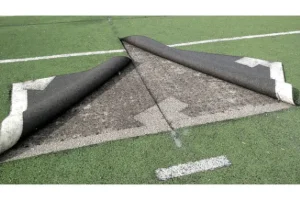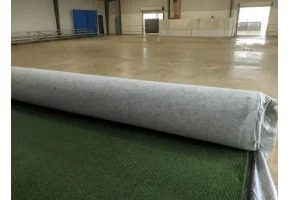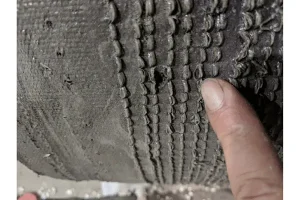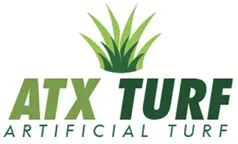What is the base for artificial turf?
Published December 28, 2022

Base for Padded Turf
Often thought of as “Indoor Turf,” turf manufactured with a rubber, or urethane pad on the back, commonly 5mm, is intended to achieve some impact attenuation with a flatter, nylon turf on top. While beneficial and easier to install, these kinds of turf are not made to drain and can, in fact, absorb water and moisture. This can lead to mildew and unpleasant odors in the turf when installed outside, or indoor areas that flood. These padded turfs are ideal for inside gym floors, basement or garage batting cages or any other indoor areas that do
Base for Outside “Punched” Turf
Bladed Turf, or Grass Like, turf is typically made without a pad where the fibers are tufted into black urethane backing, almost like a thick black plastic. At the end of the manufacturing process, these turfs are “punched” with small spikes which look like pencil holes every 4 inches or so. The “punched” holes in these residential and sports field turfs allow water to drain through the turf, down through a gravel base and away.

Concrete Slab or Driveway as Base for Artificial Turf
The ATXTurf team is frequently asked about installing batting cages on driveways or in parking lot areas. This is perfectly fine with the understanding that there is no drainage mechanism on these surfaces, so after it rains, there may be no place for the water to drain on perfectly flat areas. If the surface is at a slight angle, or has a slight crown, it will drain faster. Older concrete and asphalt surfaces, however, typically have a degree of unevenness or potholes which may even collect water and it’s simply a matter of waiting for the water to evaporate. In these cases, it simply means you lose one of the benefits of turf. In the southwest and areas with little rain, this is less of an issue.
When building a new batting cage outside, it’s a common mistake to needlessly spend money on pouring a concrete base under a roofed structure. Simply laying a gravel base suffices for turf and can save thousands of dollars in needless concrete materials and labor. These cage structures often don’t have sides and need the drainage provided by the gravel, anyway, as rain can come in sideways.
Similarly, Doggie DayCares and Pet Facilities require drainage for obvious reasons and simply laying punched turf on a flat concrete slab indoors is not ideal. The ATXTurf team has installed turf in some dog facilities where champion dogs were trained and are more well behaved, and the owner was not concerned with this issue. On the other hand, dog rescue shelters and adoption centers do, in fact, need drainage as the turf will get soiled rather quickly and frequently. Diseases are more of a concern for these businesses, as well.
Outdoor Sports Field Turf Base
Football, Soccer and Baseball fields need to be installed over a gravel base for many reasons. Proper drainage is the main benefit in the increased playing time it allows. Second, College and High School fields are required to achieve a specific GMAX rating for impact attenuation and concussion prevention. There typically several inches of a 3/16 inch gravel laid over “57s”, which is what most people know as the larger gravel. The finer gravel on top of the larger gravel helps achieve the required 95% compaction rating required for fields. Larger gravel itself does not compact, but small gravel does, and when properly rolled, creates that flat gravel surface under the turf.
This “flat” compacted surface is also needed to achieve good seams. Bad seams are often the result of a bad subbase. If the base is not perfectly compacted and flat, it becomes very difficult to connect and 100% glue 2 pieces of turf when one piece is higher than the other, or when one is wrinkled because of a poorly compacted job.
If you are simply building a play area in your own private backyard, no one is going to hold you to a 95% compaction rating or perform a GMAX test that High School Fields must pass, but there are certified companies you can hire that will come to the site and do these tests if you really want to achieve the ideal surface.
In conclusion, there are many answers to the question “What goes under Artificial Turf.” Many customers need turf but do not necessarily have the means to create whatever subbase is recommended. However, understanding the various options and variables ahead of purchasing turf and knowing which questions to ask, can help you get the turf that best fits your current situation.
Contact a Rep at ATXTurf today to discuss the life expectancy of your Turf for your application. 866-428-2809

0 Comments